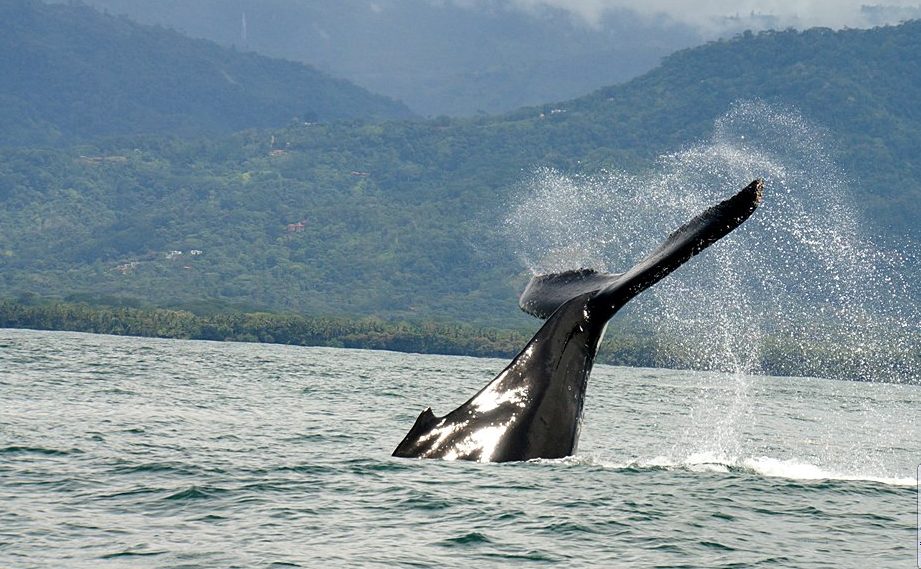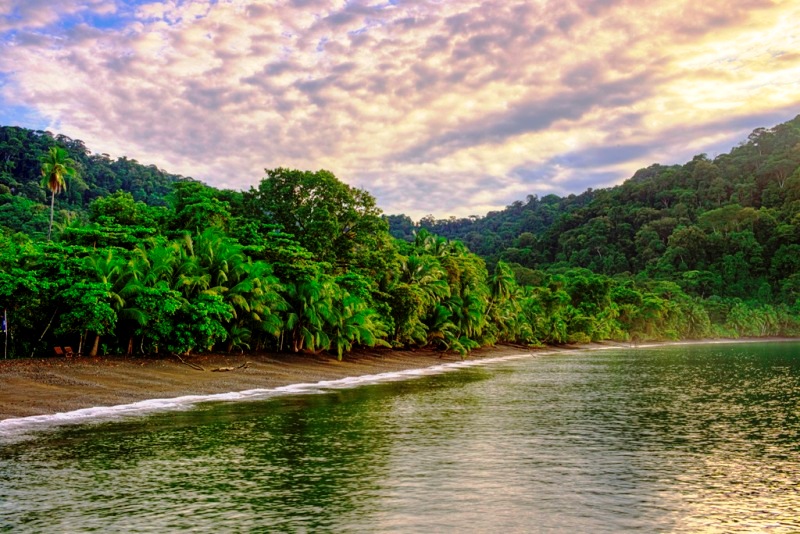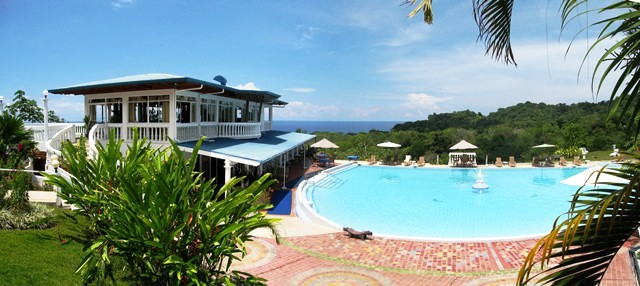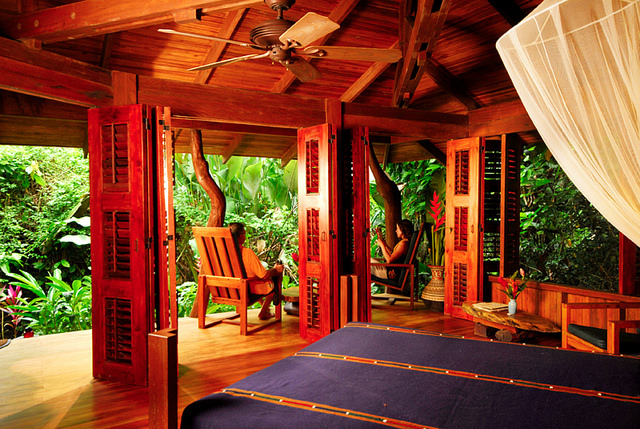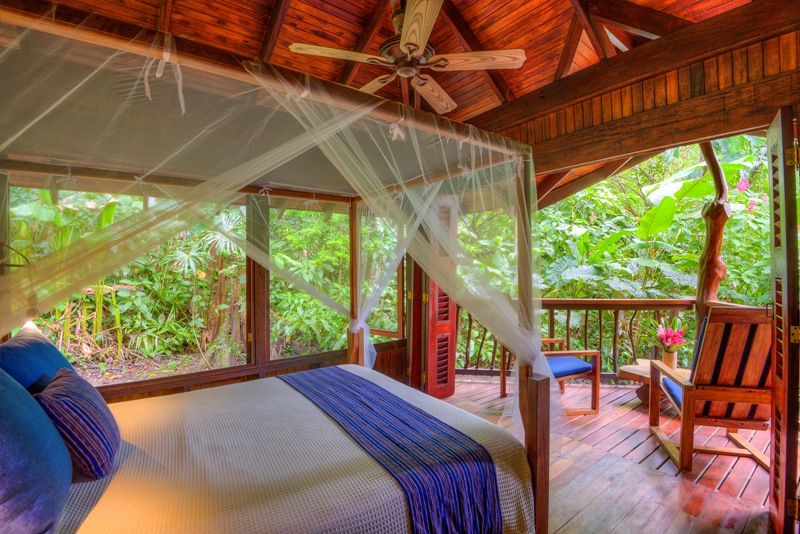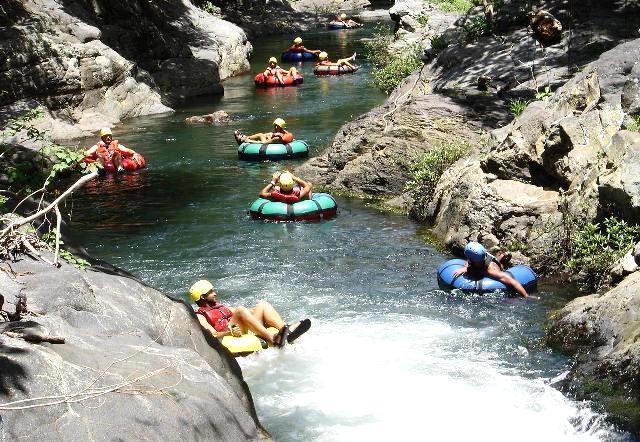Now is the time to visit the gulf of Golfo Dulce by the Osa Peninsula to see migrating humpback whales and abundant Costa Rica wildlife.
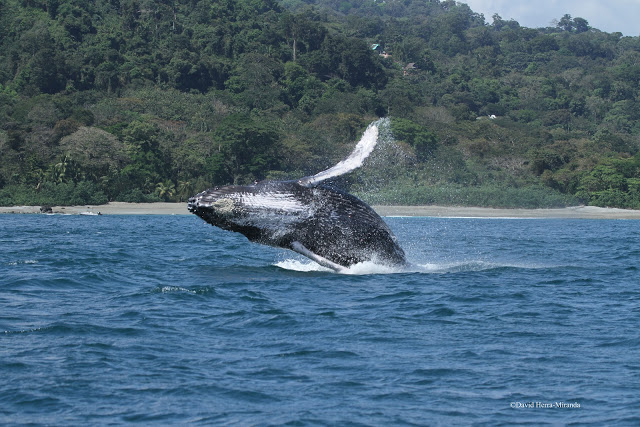
The remote Osa Peninsula region is an amazing place to see Costa Rica wildlife. This southern Pacific area is special because it holds 2.5% of the biodiversity of the entire planet in less than a thousandth of a percent of its total surface area.
Now in August and September is the time of year to see Pacific humpback whales, which arrive in the southern gulf of Golfo Dulce by the Osa Peninsula on their annual migration from Antarctica.
The best way to see the whales is on a whale watching tour by Playa Nicuesa Rainforest Lodge. The whales swim right past their private beach, and Nicuesa Lodge offers some of the best wildlife tours in Costa Rica. They take you out on the calm gulf in small boats, which allow you to be non-intrusive and respectful of marine life.
Golfo Dulce is a crucial habitat for marine life, including endangered sea turtles, several kinds of dolphins, and migrating humpback whales which use the gulf to give birth, socialize and to mate. One of the most pristine ocean habitats in Costa Rica, Golfo Dulce is considered a rare tropical fjord, one of only four in the world.
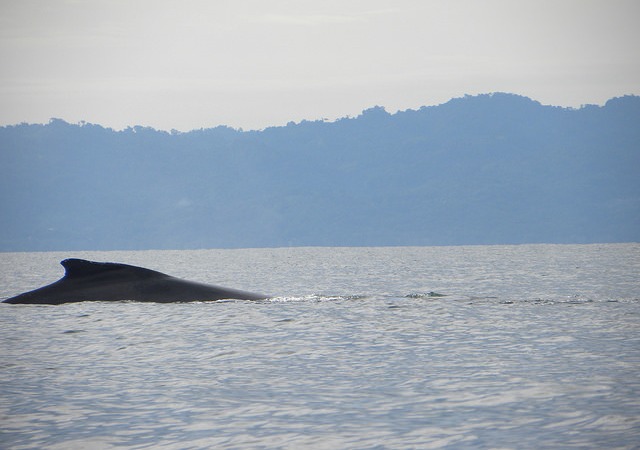
New species of Costa Rica wildlife discovered in Golfo Dulce
Researchers from Costa Rica and the United States have been studying a particular sea snake in Golfo Dulce that they now propose is a completely new species or at the very least, a distinct subspecies.
Researchers Alejandro Solórzano and Mahmood Sasa, of the University of Costa Rica (UCR), have been studying this new sea snake in Golfo Dulce for five years. U.S. researchers Brooke Bessesen and Gary Galbreath recently published their own study on the sea snake in the journal ZooKeys.
Called a Yellow Sea Snake (Hydrophis platurus xanthos), to differentiate it from its oceanic relative the Yellow-bellied Sea Snake (Hydrophis platurus), this new species is completely yellow rather than the two-tone yellow and black. The Golfo Dulce species measures about 60 cm, which is smaller than the more common yellow-bellied sea snake, found in the open Pacific Ocean from California to northern Peru.
Biologists theorize that the Yellow Sea Snake evolved its solid yellow color because in Golfo Dulce’s warm waters it didn’t need the black dorsal coloring like its cousin to help concentrate heat.
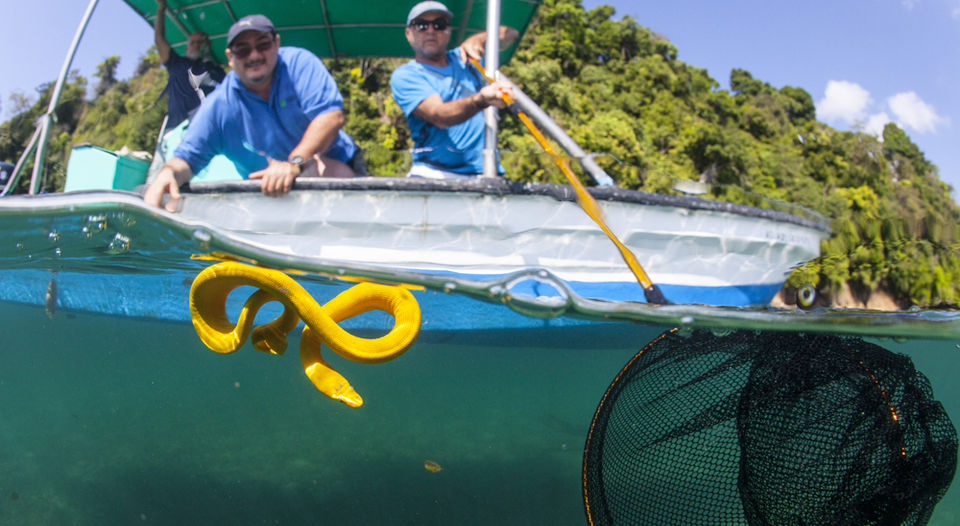
The Yellow Sea Snake also has a hunting technique that hasn’t been seen in other sea snakes. The common Yellow-bellied snake prefers to hunt stretched out and floating in very smooth water. The Golfo Dulce species usually hunts at night in choppy water, curled upside down in an “S”-shape like a little buoy at the surface, which helps it maintain stability in the waves to catch fish.
When Costa Rican biologists Solórzano and Sasa come to Golfo Dulce to study the sea snake, Playa Nicuesa Rainforest Lodge supports their field work by providing accommodations and a boat and captain to conduct their research. Sea snakes are usually found out in the middle of the gulf and not close to shore.
Article by Shannon Farley





